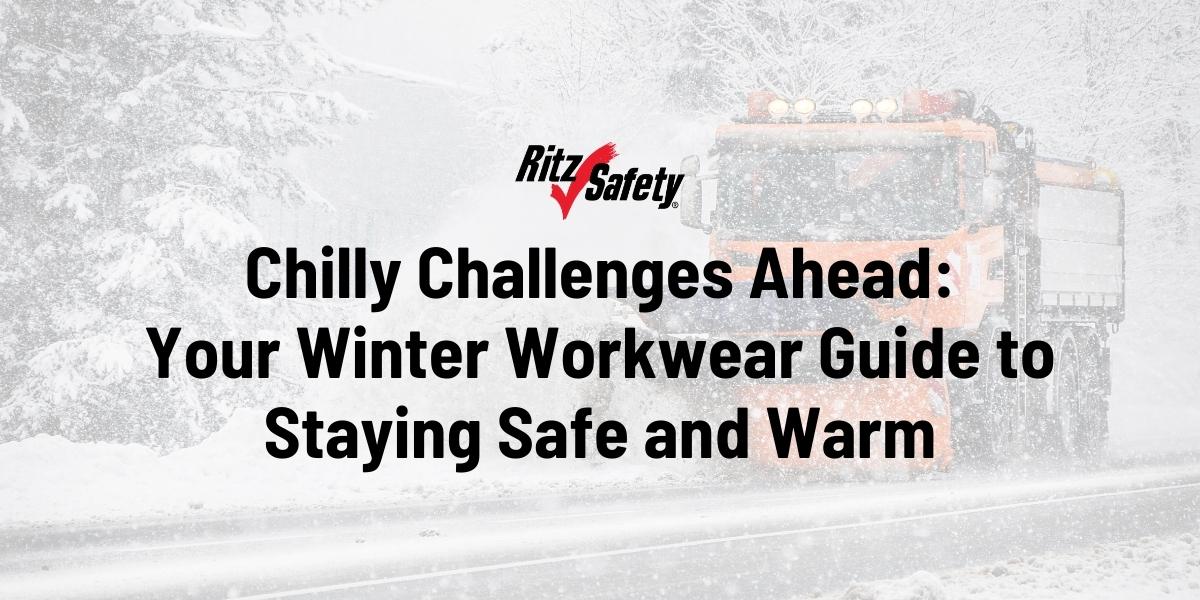
Chilly Challenges Ahead: Your Winter Workwear Guide to Staying Safe and Warm
As cold weather approaches, how do we make sure we are staying safe and warm while exposed to the chilly elements?
Those that find themselves working in cold weather most or all the time, such as construction workers, lumber workers, utility line technicians, and agricultural workers, are at high risk of cold-related injuries and illnesses. Others that are at high risk of cold stress are essential workers that have to navigate through the elements, such as mail carriers, law enforcement officers, first responders, delivery drivers, and social workers. Service professionals who switch between working inside and outside, such as plumbers and electricians, are also exposed to the cold. Same with those working in non-heated areas such as freezer storage.
With the exposure to the cold that all these workers face, without the proper preparation and protection, they are at high risk of slips and trips, frostbite, hypothermia, trench foot, and other injuries or illnesses. One of the best defenses against these conditions is taking preventative measures, starting with ensuring you are wearing the appropriate clothing.
Gear up and follow the tips in these four vital categories to make sure you're ready to take on the chilliest of workdays!
Dressing for Cold Weather
The first step to staying warm while working in the cold is to dress appropriately. Wearing warm clothing helps to insulate your body from low temperatures and helps your body retain its heat for a longer period of time. Make sure to layer up to keep warm, but keep in mind you still need to be able to move and do your job, so don’t over-layer! It’s recommended to wear 3 layers of clothing to keep yourself warm, with an additional wind- and waterproof layer if needed. When picking which clothing to wear, avoid items made with cotton because when cotton gets wet, it actually extracts heat from your body. Not recommended when trying to stay warm! The best fabrics to choose from are wool, polypropylene, and polyester fleece as they retain heat, even when wet.
Top Clothing Picks for Cold Weather
Footwear and Traction in Cold, Icy Conditions
When dressing for success in cold weather, make sure you don’t forget about your feet! You need to choose the right footwear that will help keep your feet warm and help you maintain your grip, even in icy conditions! Somethings to consider when picking out your footwear are insulation, waterproofing, and breathability. Insulated footwear ensures your feet retain their heat while breathability and waterproofing keep your feet dry and protected from moisture and snow. Ice pick cleats are also a great addition to add to your cold weather footwear for extra grip to help reduce slips and trips!
Top Footwear Picks for Cold Weather
Hand Protection in Cold Weather
Don’t forget your gloves! When exposed to cold temperatures, your body wants to protect the most important things, so it constricts the blood vessels in your hands to keep warm blood near your body’s core. However, this leads to reduced blood flow in the hands and fingers, which can lead to numbness and frostbite. Wearing gloves can help trap heat and slow down the heat loss in your hands by creating a barrier from the cold and keeping your hands insulated. Gloves can also protect your hands from dry winter air, reducing the risk of chapped skin.
When choosing which gloves you should wear, keep the following factors in mind. Insulation and waterproofing. Insulated gloves trap heat and keep your hands warm while waterproof gloves keep your hands dry while working in wet or snowy conditions. Touchscreen compatibility is another factor to think about. If your job requires you to use your phone or another touchscreen device, having touchscreen compatible gloves allow you to use these devices without having to remove your gloves!
Top Glove Picks for Cold Weather
Eye, Face, and Head Protection in Cold Weather
It’s also important to ensure you are protecting your eyes, face, and head in cold conditions! Your head and neck can cause you to lose your body heat rapidly if they are not protected. To ensure this doesn’t happen, make sure you wrap them well and keep them warm with scarves and hats. Balaclavas also help to ensure your head and neck stay warm, along with keeping your face protected! Next, come sunglasses or safety goggles! Even in the winter, sunglasses still come in handy! Sunglasses help protect your eyes from sunlight reflecting off of the bright snow, while safety goggles can help protect from wind, blowing snow, and airborne debris.
Top Head Protection Picks for Cold Weather
Need assistance finding the cold weather gear you and your team need this season? Talk to our experts today!